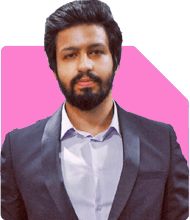Which M/F ratio is best for a 5-year-old child?
Ramalingam Kalirajan |10166 Answers |Ask -Follow
Mutual Funds, Financial Planning Expert - Answered on Aug 14, 2024
He has an MBA in finance from the University of Madras and is a certified financial planner.
He is the director and chief financial planner at Holistic Investment, a Chennai-based firm that offers financial planning and wealth management advice.... more

Sir, What M/F is best for 5 years
Evaluating Investment Options
When considering mutual funds for a five-year period, you need to assess the balance between risk and return. Here are a few categories that might suit your investment horizon:
Balanced Hybrid Funds:
Risk-Return Balance: These funds invest in both equity and debt, offering a balanced approach. They can provide moderate growth while managing risk.
Suitability: Ideal if you prefer a blend of growth potential and stability.
Dynamic Asset Allocation Funds:
Active Management: These funds adjust their allocation between equity and debt based on market conditions, offering flexibility.
Risk Management: They help in reducing risk during market downturns by shifting towards debt.
Conservative Hybrid Funds:
Safety First: These funds focus more on debt with a smaller allocation to equity. They are less volatile and provide steady returns.
Suitability: Suitable if you are conservative and prefer safety over high returns.
Avoiding Index Funds and Direct Plans
While index funds are popular, they may not be the best fit for your five-year horizon.
Disadvantages of Index Funds:
Limited Growth: Index funds merely replicate the market. They don’t provide opportunities to outperform, which could limit your returns over five years.
No Active Management: Index funds can’t adapt to changing market conditions. This lack of flexibility could lead to missed opportunities.
Disadvantages of Direct Plans:
Lack of Professional Guidance: Investing directly without a Certified Financial Planner may lead to suboptimal decisions.
Complexity: Regular plans offer expert management, which is crucial for navigating market fluctuations. Direct plans lack this support.
The Importance of Active Management
Given your five-year horizon, actively managed funds can offer better prospects.
Benefits of Actively Managed Funds:
Potential for Higher Returns: Fund managers actively select stocks, aiming to outperform the market.
Adaptability: They can adjust the portfolio based on market trends, which is crucial for a medium-term investment.
Creating a Diversified Portfolio
To make the most of your five-year investment period, diversification is essential. Here’s how you can structure your investments:
Equity Allocation:
Growth Potential: Allocate a portion to equity funds with a focus on large-cap or multi-cap funds. These funds offer growth potential with relatively lower risk compared to small-cap funds.
Debt Allocation:
Stability: Include debt funds like short-term or medium-term bond funds. They provide steady returns and reduce overall portfolio risk.
Hybrid Allocation:
Balanced Approach: Consider hybrid funds to maintain a balance between growth and safety. They automatically adjust the equity-debt mix, making them ideal for medium-term goals.
Monitoring and Rebalancing
Your investment strategy shouldn’t be static. Regular monitoring and rebalancing are key to staying on track.
Regular Reviews:
Performance Check: Review your portfolio every six months to ensure it’s aligned with your goals.
Rebalance When Needed: If market conditions change, consider rebalancing your portfolio to maintain the desired risk-return profile.
Final Insights
Investing for five years requires a careful blend of growth and stability. Avoid index funds and direct plans as they may not offer the flexibility and expert management needed for this period. Instead, focus on a diversified portfolio with a mix of equity, debt, and hybrid funds. Regular monitoring and rebalancing will help you stay on course to meet your financial goals.
Best Regards,
K. Ramalingam, MBA, CFP
Chief Financial Planner
www.holisticinvestment.in
You may like to see similar questions and answers below
Ulhas Joshi | Answer |Ask -Follow
Mutual Fund Expert - Answered on Jul 05, 2023
Mohit Arora |71 Answers |Ask -Follow
Dating Coach - Answered on Mar 03, 2024
Ramalingam Kalirajan |10166 Answers |Ask -Follow
Mutual Funds, Financial Planning Expert - Answered on May 21, 2024
Mohit Arora |71 Answers |Ask -Follow
Dating Coach - Answered on Jun 16, 2024
Ravi Mittal |629 Answers |Ask -Follow
Dating, Relationships Expert - Answered on Nov 04, 2024
Nayagam P P |9900 Answers |Ask -Follow
Career Counsellor - Answered on Aug 04, 2025
Ramalingam Kalirajan |10166 Answers |Ask -Follow
Mutual Funds, Financial Planning Expert - Answered on Aug 04, 2025
Ramalingam Kalirajan |10166 Answers |Ask -Follow
Mutual Funds, Financial Planning Expert - Answered on Aug 04, 2025
Ramalingam Kalirajan |10166 Answers |Ask -Follow
Mutual Funds, Financial Planning Expert - Answered on Aug 04, 2025
Ramalingam Kalirajan |10166 Answers |Ask -Follow
Mutual Funds, Financial Planning Expert - Answered on Aug 04, 2025
Ramalingam Kalirajan |10166 Answers |Ask -Follow
Mutual Funds, Financial Planning Expert - Answered on Aug 04, 2025
Ramalingam Kalirajan |10166 Answers |Ask -Follow
Mutual Funds, Financial Planning Expert - Answered on Aug 04, 2025
Ramalingam Kalirajan |10166 Answers |Ask -Follow
Mutual Funds, Financial Planning Expert - Answered on Aug 04, 2025
Ramalingam Kalirajan |10166 Answers |Ask -Follow
Mutual Funds, Financial Planning Expert - Answered on Aug 04, 2025
Ramalingam Kalirajan |10166 Answers |Ask -Follow
Mutual Funds, Financial Planning Expert - Answered on Aug 04, 2025





















.jpg)



